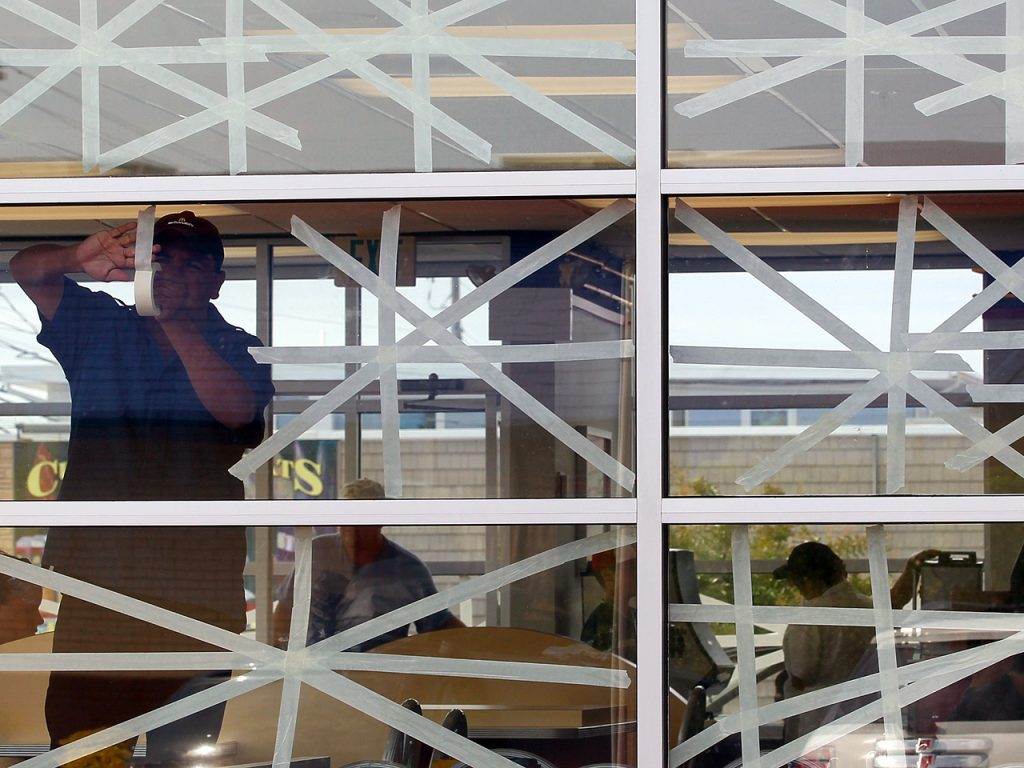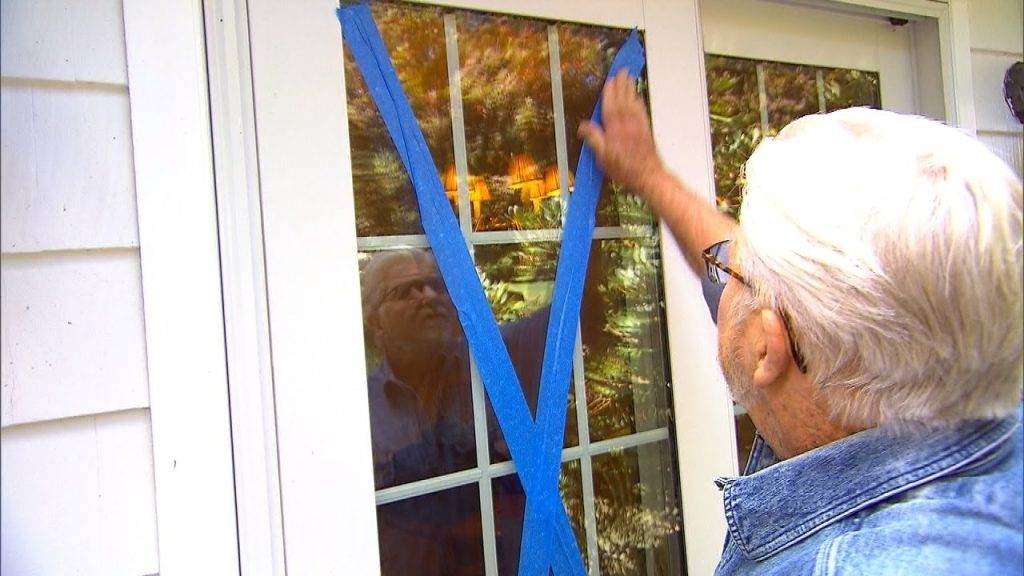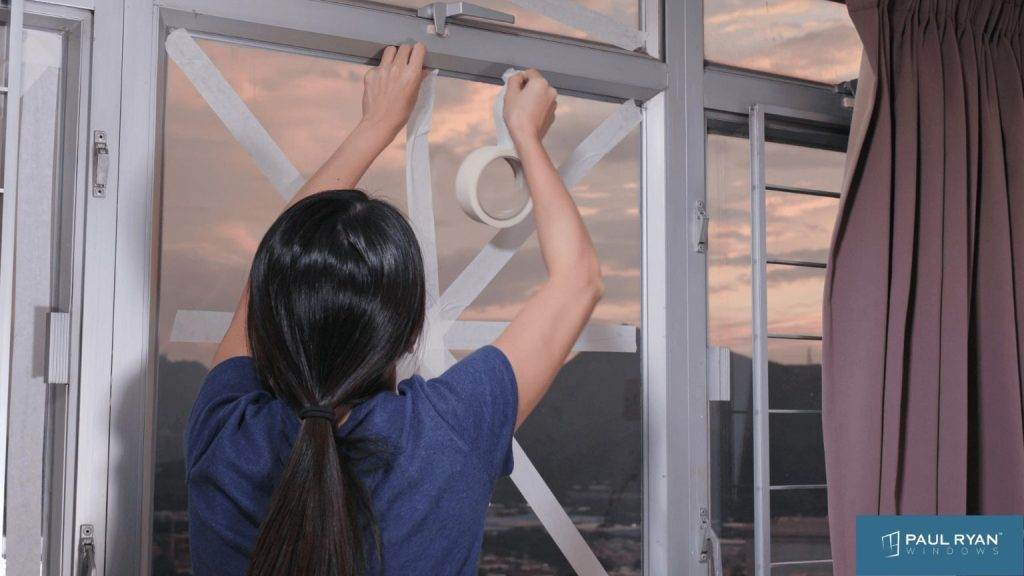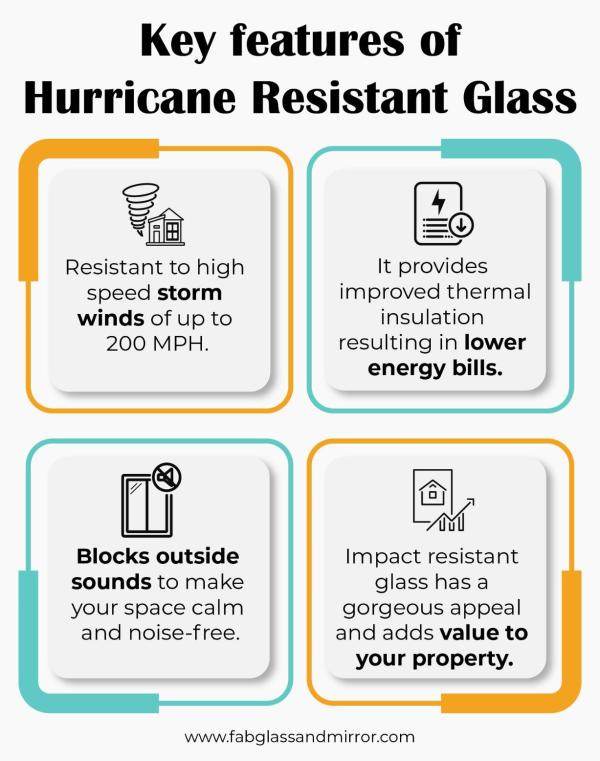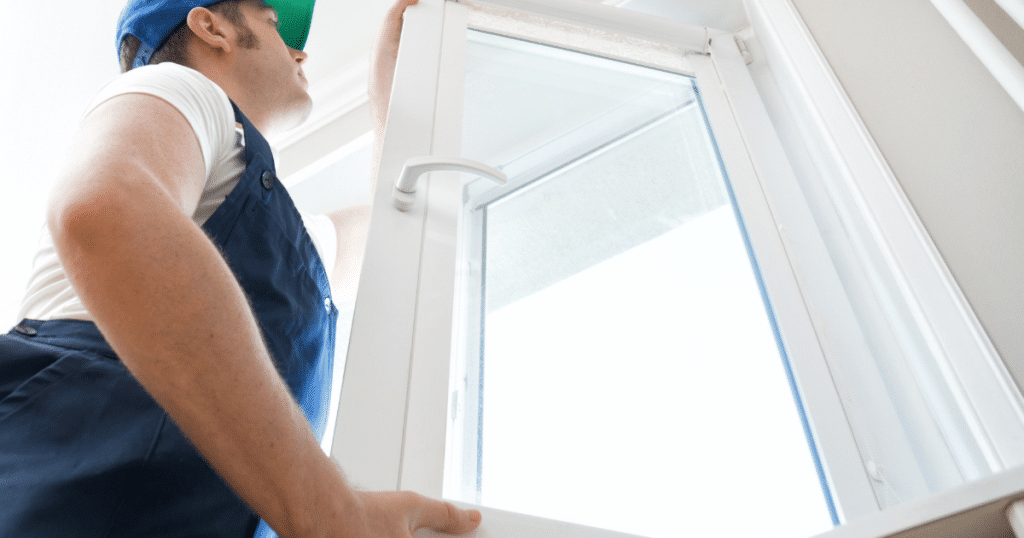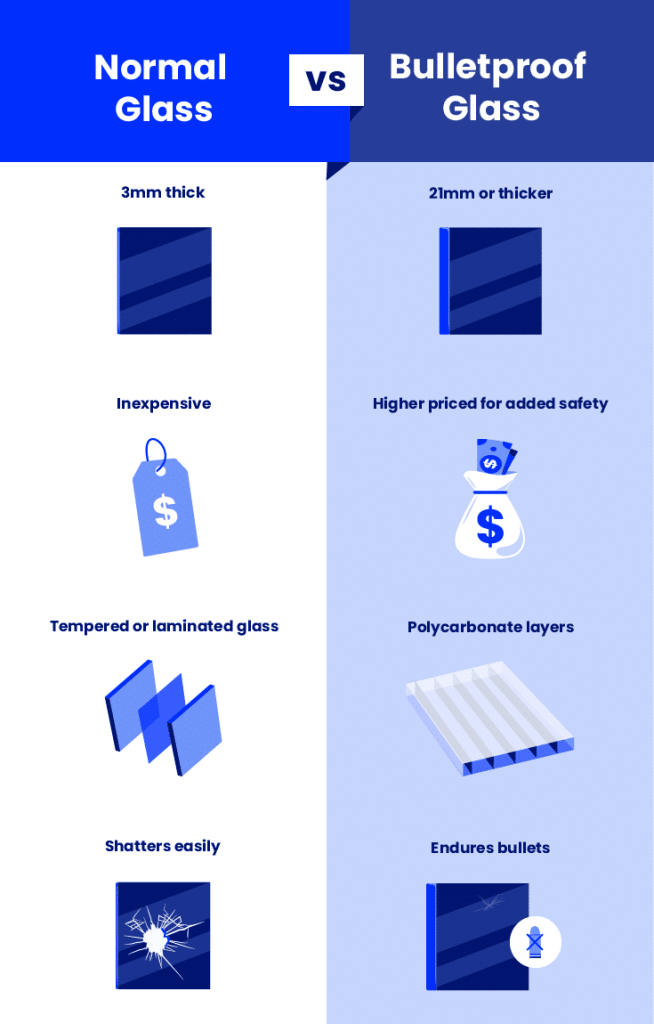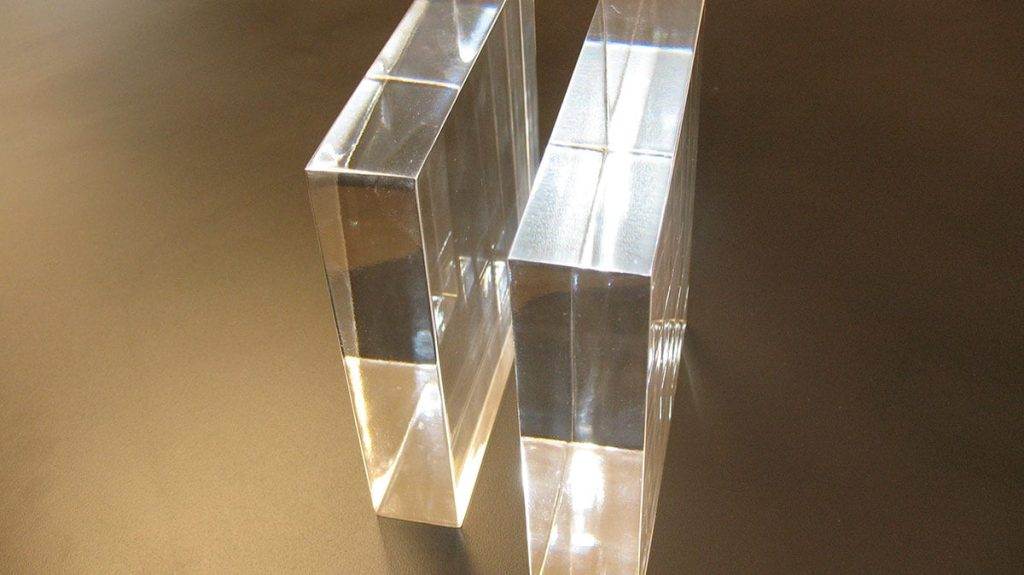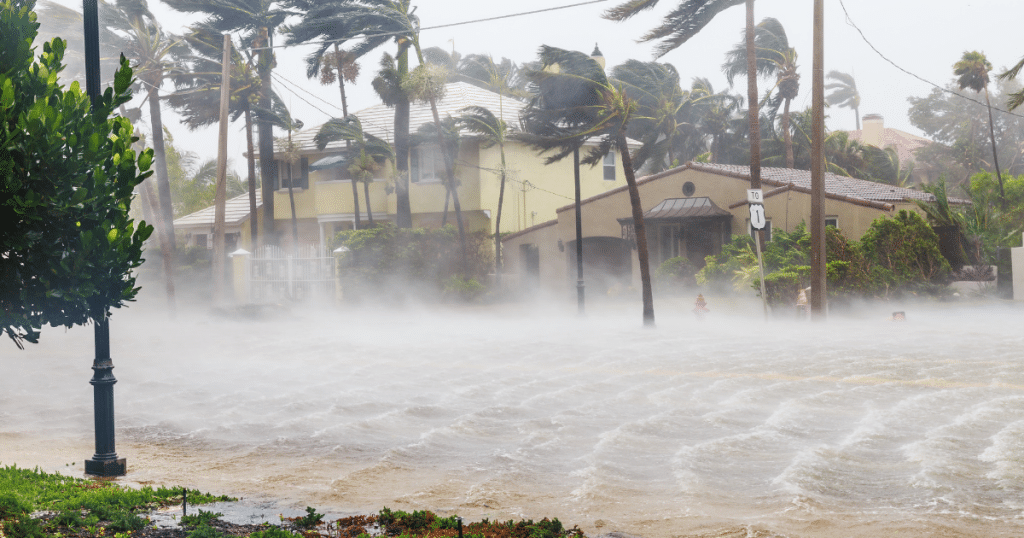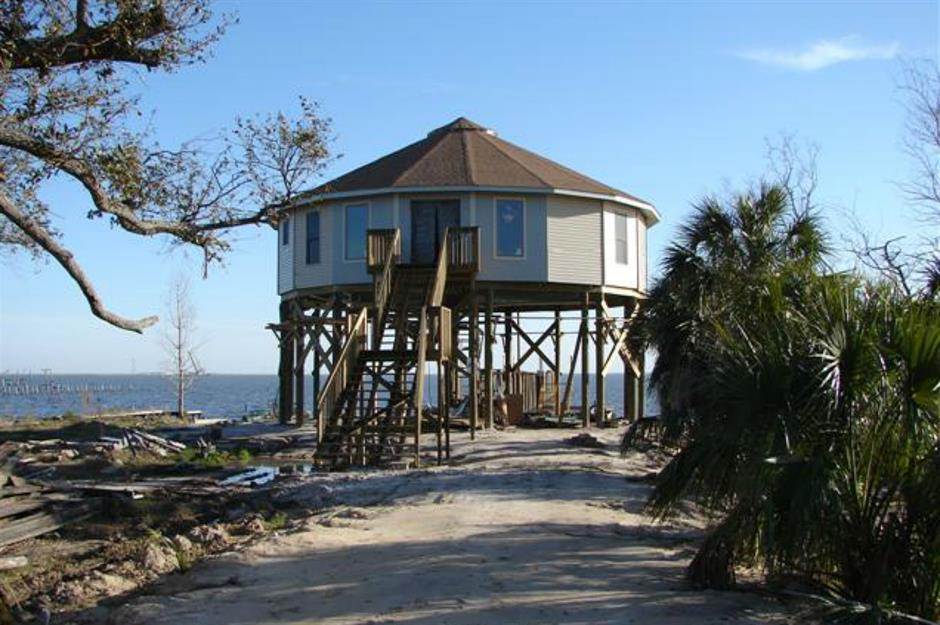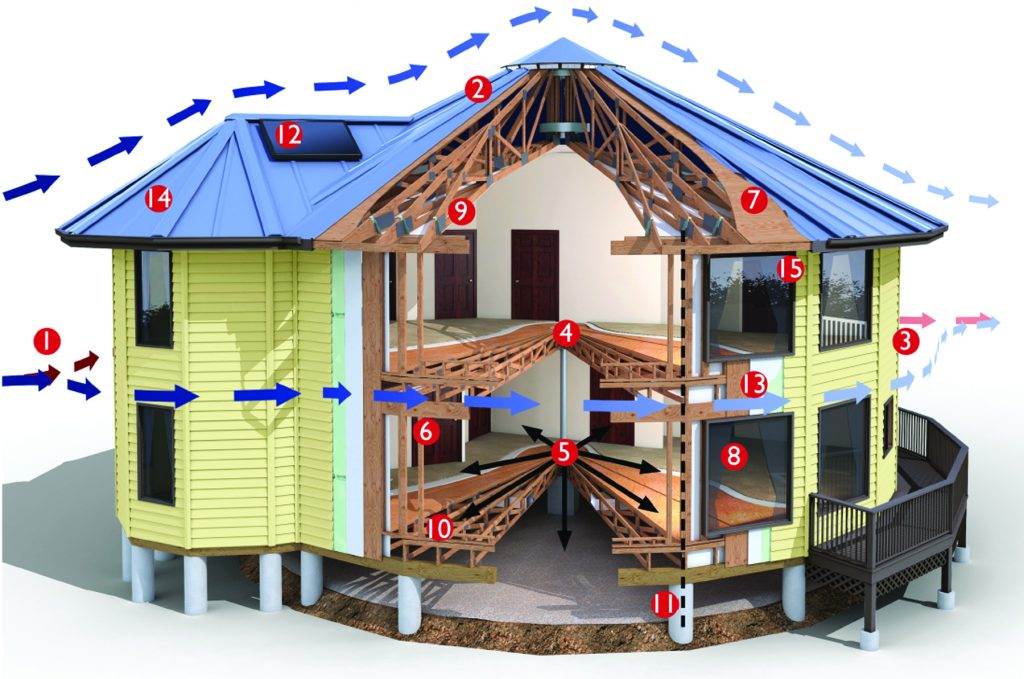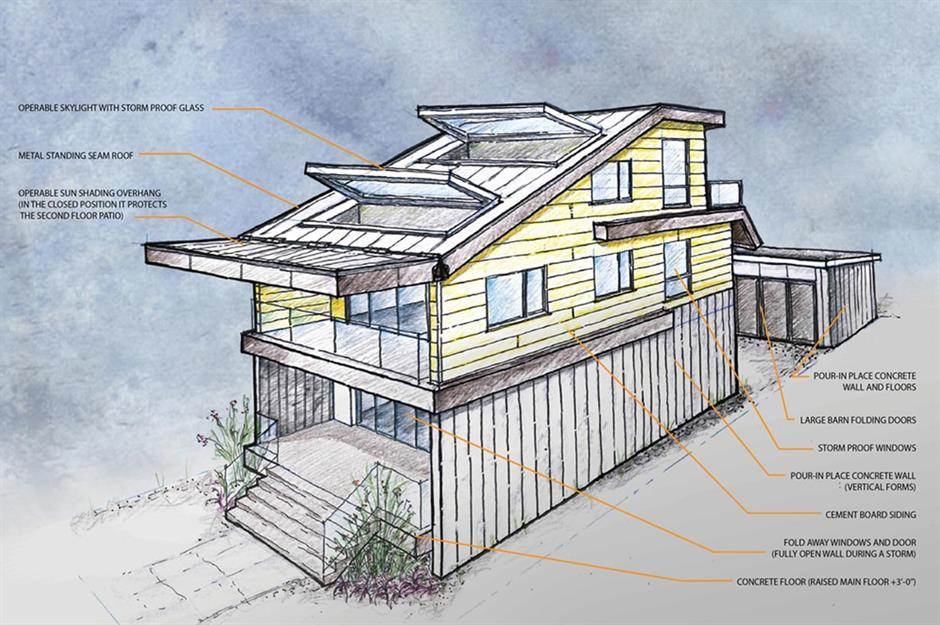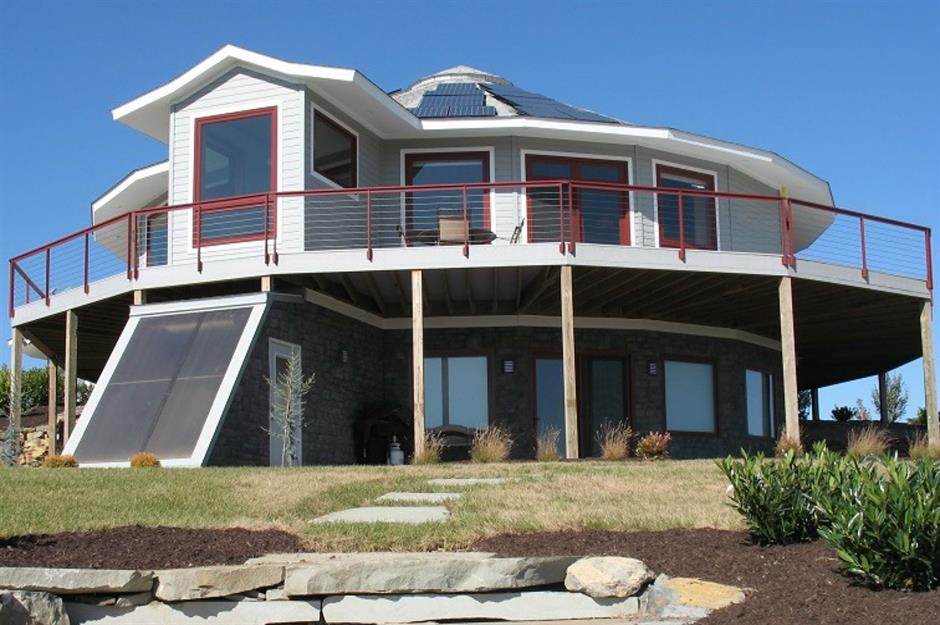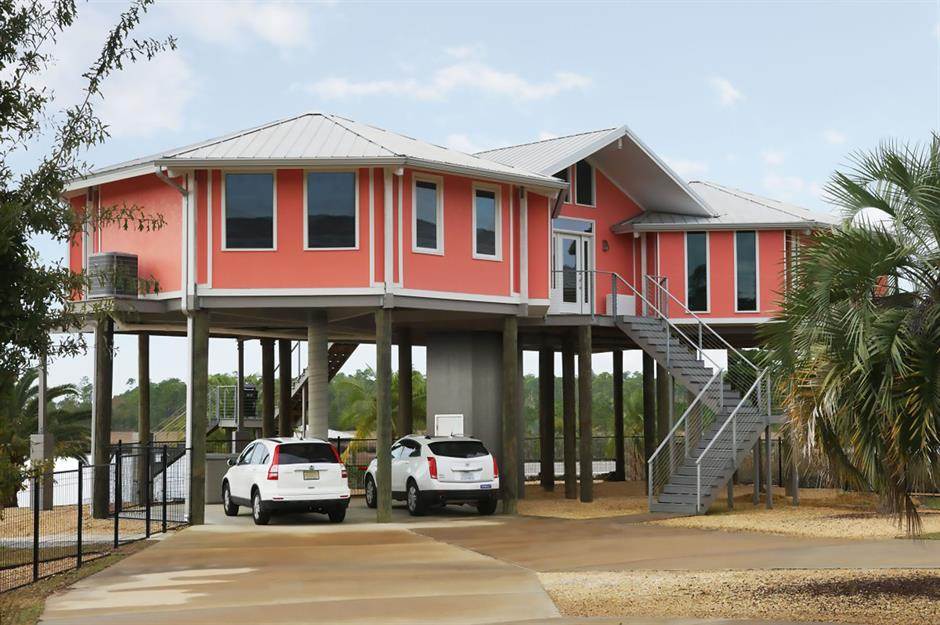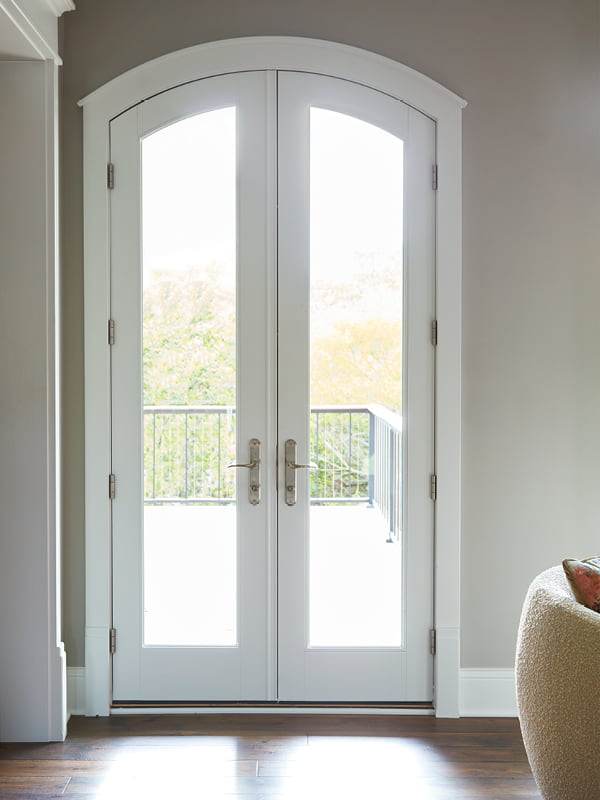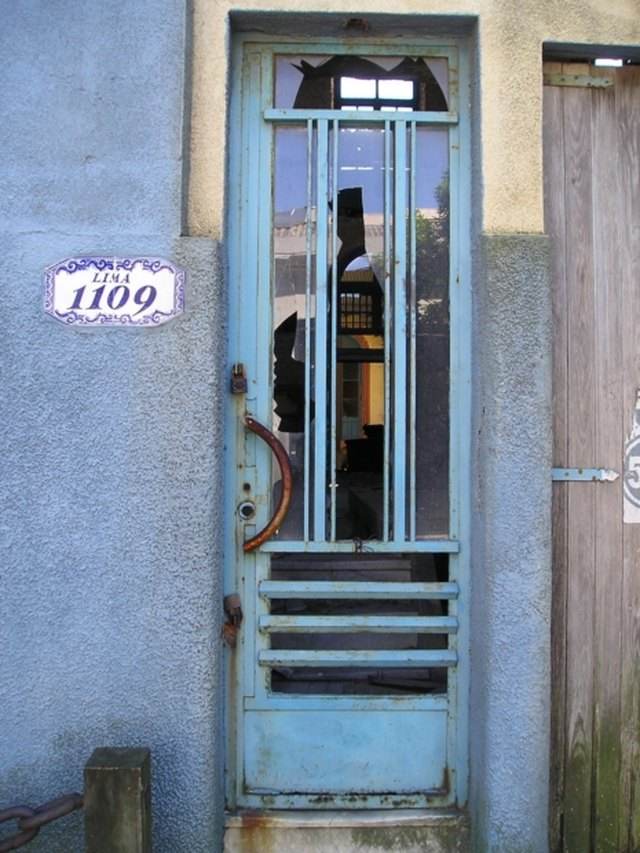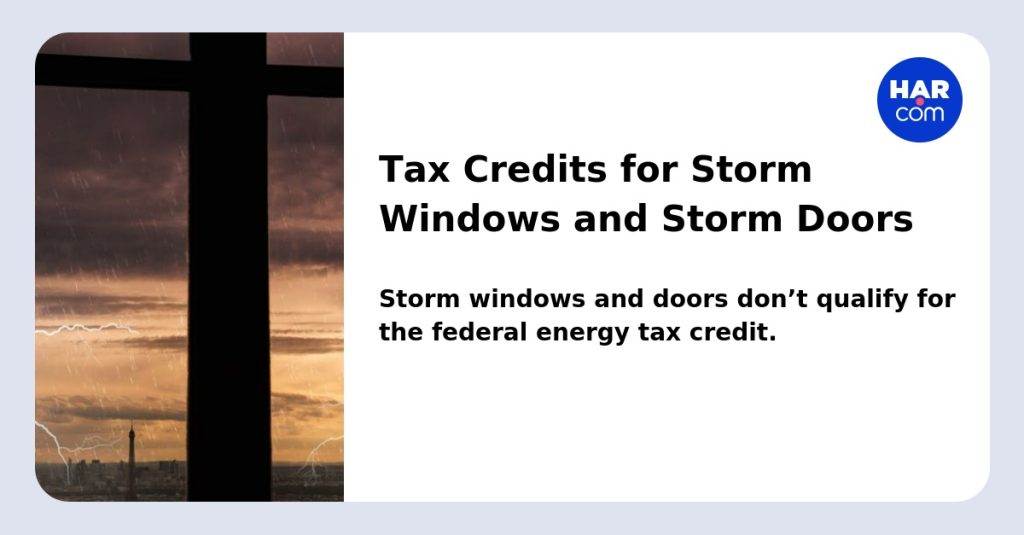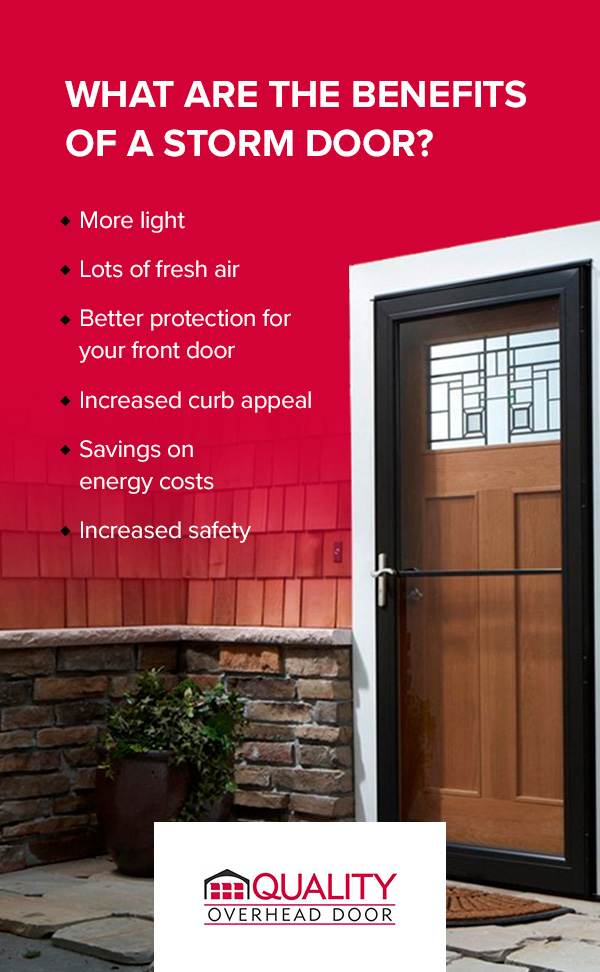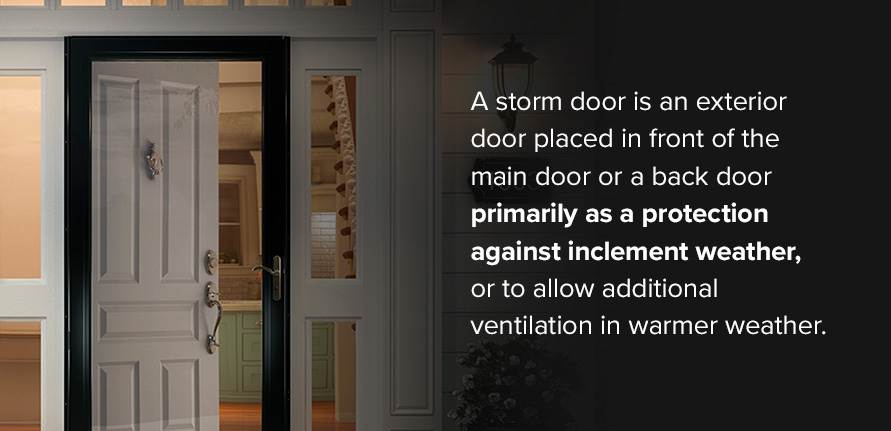You might think that having double pane windows would automatically make your home hurricane-proof. After all, isn’t that one of the benefits of having double pane windows – improved durability and protection against the elements? Well, the truth is that not all double pane windows are created equal when it comes to withstanding hurricane-force winds. In this article, we explore the factors that determine whether a double pane window can truly withstand the destructive power of a hurricane, and what you can do to ensure your windows are up to the task.

This image is property of modernize.com.
Factors to Consider for Hurricane-proof Windows
When it comes to protecting our homes from the destructive forces of hurricanes, one of the most important factors to consider is the type of windows we have. Hurricane-proof windows, also known as impact-resistant windows, are specially designed to withstand the strong winds and flying debris that can be associated with hurricanes. But what exactly should we look for when choosing hurricane-proof windows? There are several key factors to consider.
Impact Resistance
The first factor to consider when choosing hurricane-proof windows is their impact resistance. These windows are constructed using materials that are extremely strong and durable, such as laminated glass or high-impact glass. These materials are designed to withstand the impact of flying debris that can result from high winds during a hurricane. So, it’s important to ensure that the hurricane-proof windows we choose have a high level of impact resistance.
Design Pressure Rating
Another important factor to consider is the design pressure rating of the hurricane-proof windows. This rating measures the windows’ resistance to strong winds and the pressure that these winds can exert on them. The higher the design pressure rating, the more resistant the windows are to wind damage. So, it’s crucial to select hurricane-proof windows with a design pressure rating that is suitable for our area’s hurricane risk.
Installation Requirements
Lastly, it’s important to consider the installation requirements of hurricane-proof windows. These windows must be installed properly to ensure their effectiveness in protecting our homes during a hurricane. The installation process may involve reinforcing the window frames and using special hardware to secure the windows in place. Therefore, it’s vital to hire a professional installer with expertise in hurricane-proof window installations to ensure that the windows are properly installed and provide maximum protection.
Understanding Double Pane Windows
Before we delve into the details of hurricane-proof windows, it’s essential to understand the concept of double pane windows. Double pane windows, also known as double glazed windows, are made up of two panes of glass separated by a layer of air or gas, typically argon or krypton. These windows are designed to provide insulation and improve energy efficiency in our homes.
Composition
Double pane windows consist of two layers of glass with a spacer in between, creating a sealed unit. The spacer is usually made of aluminum or other materials that provide structural support and help maintain proper spacing between the glass panes. The sealed unit is then installed within the window frame, creating an airtight space between the glass layers.
Insulating Properties
The main advantage of double pane windows is their insulating properties. The layer of air or gas between the glass panes acts as a barrier, reducing the transfer of heat between the interior and exterior of our homes. This helps to keep our homes cooler in the summer and warmer in the winter, resulting in energy savings and increased comfort.
Benefits
In addition to their energy-saving benefits, double pane windows offer other advantages. They can help to reduce outside noise, creating a more peaceful and quiet indoor environment. Furthermore, these windows can also provide UV protection, blocking harmful UV rays that can fade furniture, carpets, and other interior furnishings over time.
Benefits of Double Pane Windows
Now that we have a better understanding of double pane windows, let’s explore some of their specific benefits.
Energy Efficiency
One of the most significant benefits of double pane windows is their energy efficiency. The insulating properties of these windows help to reduce heat transfer, preventing unwanted heat gain in the summer and heat loss in the winter. This means that our heating and cooling systems don’t have to work as hard to maintain a comfortable indoor temperature, resulting in lower energy bills.
Noise Reduction
Another advantage of double pane windows is their ability to reduce outside noise. The layer of air or gas between the glass panes acts as a buffer, absorbing and dampening sound waves. This can be especially beneficial if we live in a noisy neighborhood or near a busy road, as it can help create a quieter and more peaceful indoor environment.
UV Protection
Double pane windows also offer UV protection. The two layers of glass in these windows help to block harmful UV rays from entering our homes. UV rays can fade and damage our furniture, carpets, artwork, and other interior furnishings over time. By installing double pane windows, we can help preserve the longevity and condition of our belongings, while also protecting our skin from the damaging effects of UV radiation.
Misconceptions about Double Pane Windows
Although double pane windows offer numerous benefits, there are some misconceptions that need to be addressed.
Confusion with Hurricane-proof
One common misconception is that all double pane windows are hurricane-proof. While it’s true that hurricane-proof windows may incorporate double pane technology, not all double pane windows are designed to withstand the extreme conditions of a hurricane. Hurricane-proof windows are specifically engineered to meet stringent impact resistance and design pressure ratings, as previously discussed.
Importance of Proper Installation
Another misconception is that once double pane windows are installed, we don’t need to worry about their maintenance or proper installation. However, proper installation of double pane windows is crucial for their performance and longevity. Improperly installed windows can result in air leaks, moisture infiltration, and reduced energy efficiency. Therefore, it’s essential to choose a reputable and experienced window installer who understands the specific requirements of double pane windows and follows proper installation techniques.

This image is property of images.contentstack.io.
Types of Hurricane-proof Windows
Now that we understand the differences between hurricane-proof windows and double pane windows, let’s explore the various types of hurricane-proof windows available.
High-Impact Glass
High-impact glass windows are constructed using multiple layers of glass with a clear or tinted interlayer between them. These windows are incredibly durable and can withstand the impact of flying debris during a hurricane. If the glass does break, the interlayer helps to hold the shattered glass in place, reducing the risk of injury and preventing further damage to the property.
Hurricane Shutters
Hurricane shutters are another type of hurricane-proof window option. These shutters are installed on the exterior of the windows and can be closed to provide an additional layer of protection during a hurricane. They can be made from various materials, including metal, impact-resistant glass, or polycarbonate. While hurricane shutters do not offer the same visibility and aesthetics as other window options, they provide excellent protection against flying debris.
Laminated Glass
Laminated glass windows consist of multiple layers of glass bonded together with a layer of polyvinyl butyral (PVB) or ethylene-vinyl acetate (EVA) interlayer. This interlayer helps to hold the glass together when it breaks, similar to high-impact glass. Laminated glass windows are highly resistant to impact and can withstand the forces of a hurricane.
Impact-resistant Film
Another option for hurricane protection is impact-resistant film. This film is applied directly to the existing windows, creating a strong barrier against the impact of flying debris. While impact-resistant film may not provide the same level of protection as other window options, it is a cost-effective and temporary solution that can be applied in preparation for a hurricane.
Double Pane Windows vs. Hurricane-proof Windows
Now that we have explored the features and benefits of both double pane windows and hurricane-proof windows, let’s compare them in terms of performance and cost considerations.
Comparison of Performance
In terms of performance, hurricane-proof windows outperform double pane windows when it comes to withstanding the impact of flying debris and pressures associated with hurricanes. While double pane windows provide insulation and energy efficiency benefits, they are not specifically designed to withstand hurricane conditions.
Cost Considerations
In terms of cost, double pane windows are generally more affordable than hurricane-proof windows. The additional construction and materials required to make windows hurricane-proof can significantly increase the cost. However, the added protection and peace of mind that hurricane-proof windows offer may outweigh the initial investment for those living in hurricane-prone areas.

This image is property of images.contentstack.io.
Testing and Certification
To ensure the performance and quality of hurricane-proof windows, they undergo various testing and certification processes.
ASTM E1996
The ASTM E1996 is a standard specification for performance of exterior windows, curtain walls, doors, and impact-protective systems impacted by windborne debris in hurricanes. This test evaluates the impact resistance and performance of windows under high wind conditions. Hurricane-proof windows that meet the requirements of this standard are considered to be reliable and secure during hurricanes.
Miami-Dade County Certification
Another important certification to look for is the Miami-Dade County certification. This certification is highly regarded and often required in areas prone to hurricanes. It involves rigorous testing of windows to ensure their resistance to high winds and flying debris. Windows that pass the Miami-Dade County certification are considered to be of the highest quality and suitable for hurricane-prone regions.
Benefits of Hurricane-proof Windows
Having hurricane-proof windows installed in our homes offers several benefits.
Safety and Security
The primary benefit of hurricane-proof windows is the safety and security during a hurricane. These windows are designed to withstand the impact of flying debris, reducing the risk of shattered glass and protecting our homes and possessions. Additionally, the strength and durability of hurricane-proof windows can act as a deterrent to intruders, providing an extra layer of security for our homes.
Insurance Discounts
In many cases, having hurricane-proof windows installed can lead to significant insurance discounts. Insurance companies recognize the added protection that these windows provide and often offer reduced premiums for homes equipped with hurricane-proof windows. This can result in substantial long-term savings on our insurance costs.
Increased Property Value
Investing in hurricane-proof windows can also increase the value of our property. Potential buyers are often attracted to homes with hurricane protection features, and these windows can be a significant selling point. Furthermore, the added peace of mind and reduced risk of damage from hurricanes can make our homes more desirable to potential buyers, ultimately leading to a higher resale value.

This image is property of images.contentstack.io.
Installation and Maintenance
To ensure the effectiveness and longevity of hurricane-proof windows, proper installation and regular maintenance are essential.
Proper Installation Techniques
Proper installation of hurricane-proof windows is crucial for their performance and effectiveness. The use of professional installers who have experience with hurricane-proof window installations is highly recommended. They understand the specific requirements and installation techniques necessary to ensure maximum protection and durability.
Regular Maintenance
While hurricane-proof windows are designed to be durable and long-lasting, regular maintenance is still necessary. This includes cleaning the windows regularly and inspecting them for any signs of damage or wear. Any damage or issues should be addressed promptly to maintain the windows’ functionality and effectiveness.
Conclusion
In conclusion, choosing the right windows for hurricane protection is essential for the safety and security of our homes. While double pane windows offer numerous benefits in terms of energy efficiency and insulation, they are not specifically designed to withstand hurricanes. Hurricane-proof windows, on the other hand, are constructed using impact-resistant materials and undergo rigorous testing to ensure their performance under hurricane conditions.
When selecting hurricane-proof windows, it’s crucial to consider factors such as impact resistance, design pressure rating, and installation requirements. Understanding the differences between double pane windows and hurricane-proof windows can help us make an informed decision and choose the best option for our specific needs and location.
Investing in hurricane-proof windows offers many benefits, including safety and security, insurance discounts, and increased property value. However, it’s important to remember that proper installation and regular maintenance are necessary to ensure the windows’ effectiveness and longevity.
By taking the time to research and select the right hurricane-proof windows, we can have peace of mind knowing that our homes are protected from the devastating effects of hurricanes.

This image is property of pellabranch-prod.gumlet.io.


